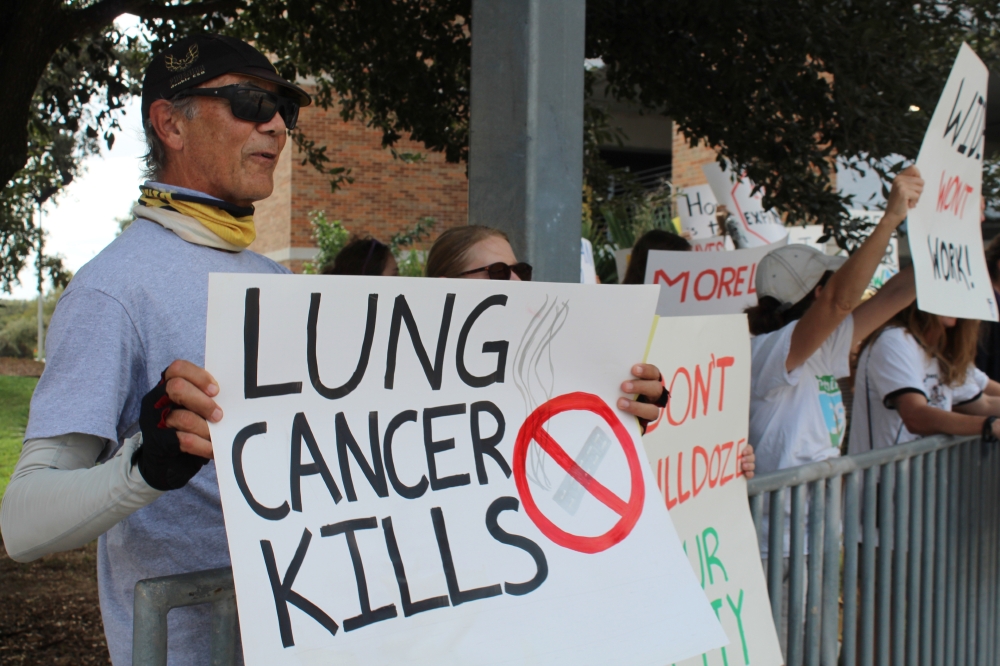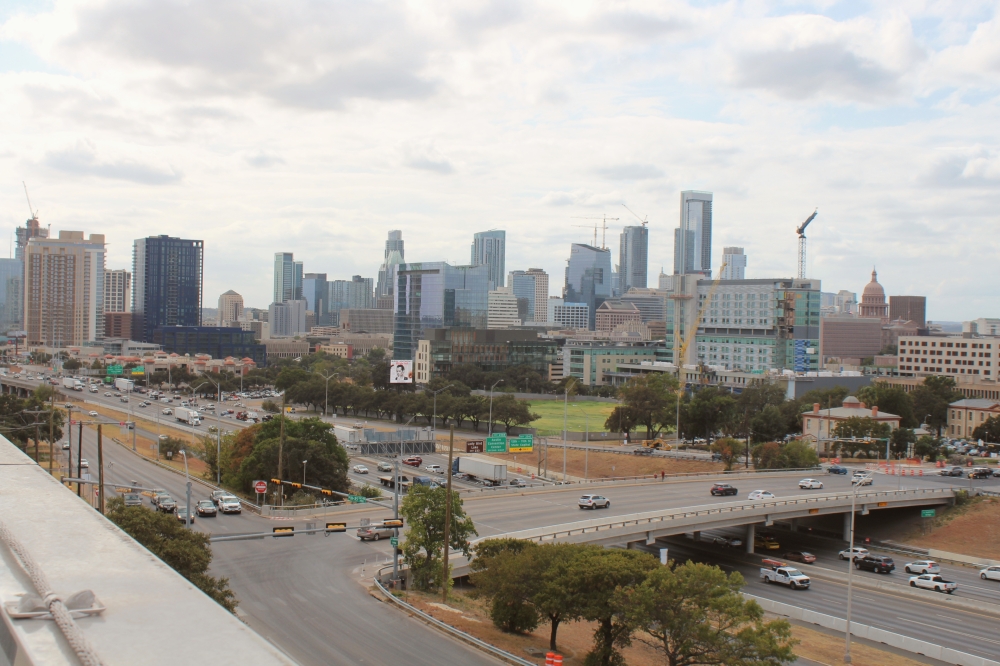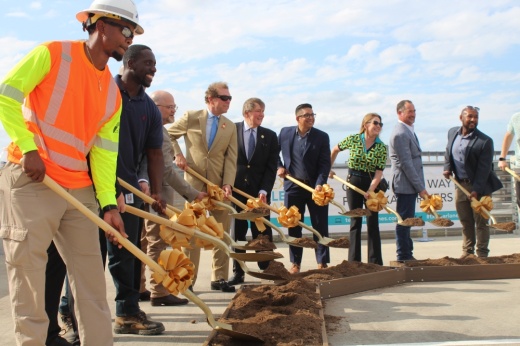State and local transportation officials gathered atop a downtown Austin parking garage Oct. 30, taking peeks over its parapet to survey the unbroken line of traffic snaking along I-35 below.
The steady hum of cars blended with the smooth notes of a jazz band, setting the stage for Texas Department of Transportation, or TxDOT, leaders' celebration of the first milestone in Austin’s "transformational" interstate project. The faint shouts of protestors could also be heard from the street not far below, in contrast to the celebration above.
What’s happening
TxDOT broke ground on its I-35 Capital Express Central project Oct. 30, which falls under the nearly 80,000 miles of roadway maintained by the agency statewide. The project will add two nontolled high-occupancy-vehicle, or HOV, lanes stretching roughly 8 miles from Hwy. 290 down to Hwy. 71.
The $4.5 billion infrastructure project will also lower the main lanes from Airport Boulevard to Lady Bird Lake and remove the upper decks, making room for a separate city of Austin initiative to add deck plazas, also referred to as cap and stitch.
The transportation agency also outlines bicycle and pedestrian improvements, including 19 miles of new shared-use path, as well as bike-pedestrian-only crossings constructed at Third Street, Fourth Street, 15th Street, 41st Street and 51st Street.
Tucker Ferguson, TxDOT’s Austin District engineer, referred to the project as a “transformational, multimodal” opportunity for the I-35 corridor, noting that this project marks the first significant infrastructure improvements made to the area’s interstate in 50 years, dating back to the 1970s.
Dubbed the “backbone” of local, regional and national transportation, the Central project connects with two ongoing local corridor improvement projects focused on the northern and southern sections of I-35 in Austin—each a component of TxDOT’s MyMobility35 program.
The entire I-35 face-lift is expected to widen the corridor up to 17-22 lanes.
The other side
The project has received criticism over the years, with concerns ranging from local homeowner and business displacement to environmental concerns.
Members from Rethink35, an advocacy group in opposition of the highway expansion, gathered to protest the project.

She gave the example of I-10, also known as the Katy Freeway, in Houston, noting that when the 26-lane roadway fully opened, commute times increased by around 40%.
Additionally, Schoenfield worries about worsening air quality that would result from more cars and traffic on the road.
“[It’s] really damaging pollution that can get into your lungs and cause childhood asthma and other adverse conditions,” she said. “... You can't have a city of this size where everyone gets around in a car.”
Schoenfield referred to a lawsuit filed by Rethink35 earlier this year, stating that TxDOT failed to conduct a proper air quality study with respect to the impacts of this project.
According to the Centers for Disease Control and Prevention, ground-level ozone—a key component of smog and air quality—is associated with many health problems, including decreased lung function, increased hospital visits and increased premature deaths.
Particle pollution can affect anyone, but it impacts some individuals more than others. Many cancers and diseases can be exacerbated or attributed to air pollution, according to health officials.
Larger particles can irritate our airways, like the nose, throat or eyes. Smaller pollution particulates can enter an individual's lungs and become absorbed into the bloodstream, resulting in inflammation, according to NASA and EPA findings. Increased inflammation can increase the risk of heart disease, heart attacks and strokes.
Additionally, air pollution, like from traffic and congestion, can particularly effect:
- People with lung diseases, such as asthma and chronic obstructive pulmonary disease, or COPD
- People with heart disease
- People with diabetes
- Older adults
- Babies and children
In their own words
“Any project of this size, we go through a rigorous environmental process. We’ve met and exceeded, in many cases, the standards and the requirements of that,” Ferguson said. “... I will say we're very proud of the project, and it's something we did a lot of outreach with the community. Even some of the concepts that they were insisting on, we've been able to incorporate into the project while still meeting the needs to move traffic, move people and improve safety.”
Ferguson said TxDOT completed an environmental impact study, which is held to federal environmental standards.
Texas Transportation Commission Chair J. Bruce Bugg Jr. told press the project had “checked the box on every known study,” saying the project has been years in the making.
“You just don't decide on a Monday that on Friday, you're going to build an expansion of I-35,” Bugg said.

Crews have already begun work to reconstruct and widen the Martin Luther King Jr. Boulevard bridge, with the next segment of construction to begin near Lady Bird Lake, from Holly Street to Hwy. 71, in early 2025.
While construction along the entire corridor is not expected to be complete until 2033, Ferguson said TxDOT has broken the larger project down into smaller, “more manageable,” contracts.
As segments get contracted out, residents should expect road closures. However, Ferguson emphasized that the transportation department remains committed to keeping three lanes open in each direction at all times.
He also said local commuters might start seeing the upper decks come down as early as 2027, as the contract for that portion of work is expected to go out for bid around mid-2026.
One more thing
CapMetro CEO Dottie Watkins said that adding HOV lanes, which allow buses to use them, will make public transit travel times much more predictable and reliable.
By controlling the flow of traffic and who can use a specific lane, transportation agencies, such as TxDOT and CapMetro, can evaluate and change lane strategies as needed to keep traffic moving smoothly, helping both the managed lanes and regular lanes stay efficient, according to TxDOT documents.
Plans for this stretch of I-35 will also see the Red Line stations at Fourth Street and Hancock Center rebuilt, as well as an added infrastructure at Riverside Drive to support future light rail connections as a part of Project Connect.





